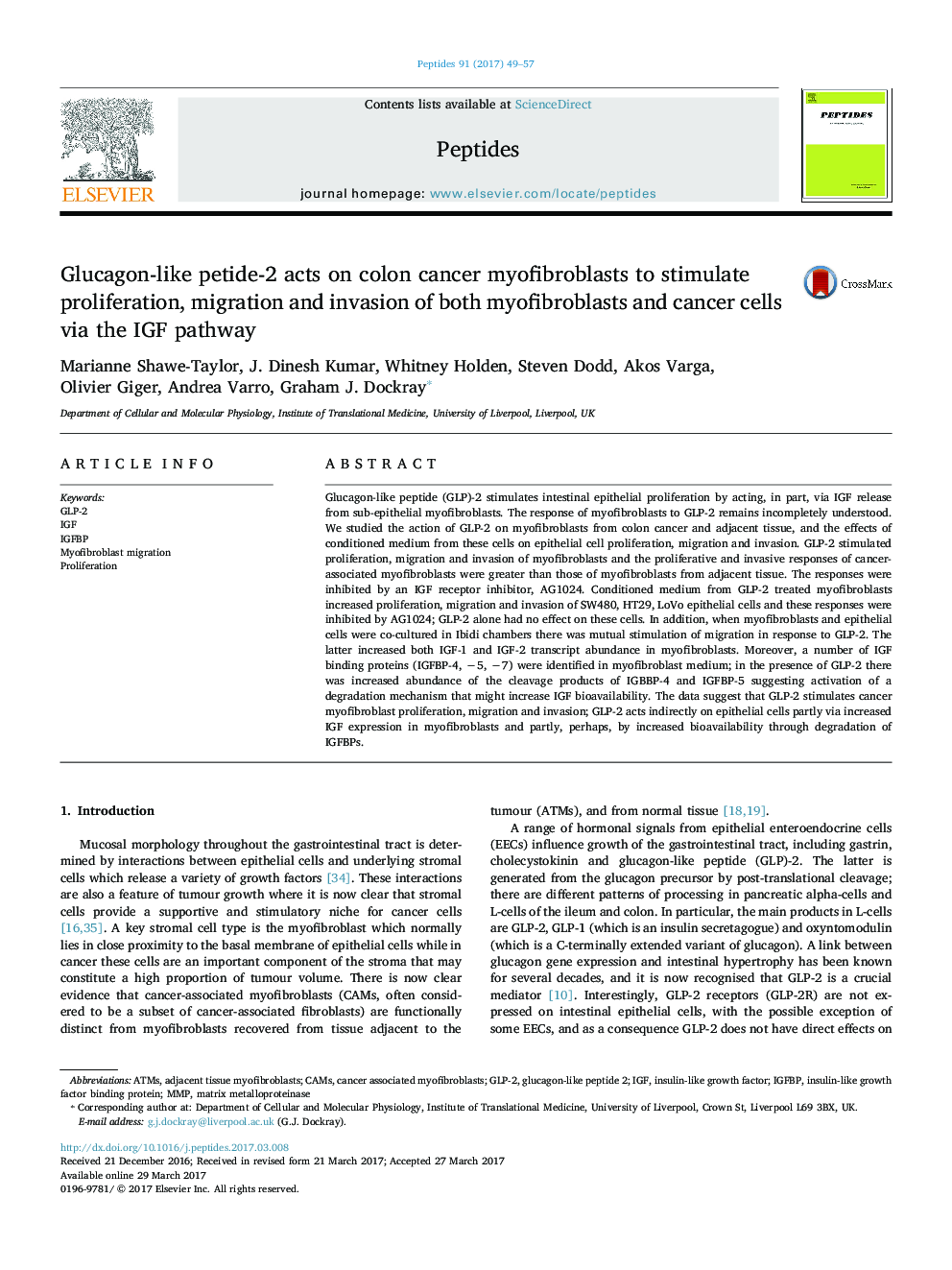| Article ID | Journal | Published Year | Pages | File Type |
|---|---|---|---|---|
| 5514655 | Peptides | 2017 | 9 Pages |
â¢GLP-2 stimulates proliferation and invasion of primary colonic cancer-derived myofibroblasts to a greater extent than those from adjacent tissue; GLP-2 conditioned medium from myofibroblasts stimulated proliferation, migration and invasion of intestinal epithelial cells.â¢An inhibitor of IGF receptor signalling blocks the effect of GLP-2 on colonic myofibroblasts.â¢GLP-2 increases IGF-1 and â2 transcript abundance in myofibroblasts and stimulates degradation of IGF binding proteins in myofibroblasts medium, compatible with increased bioavailability of IGF.â¢GLP-2 may influence the cancer microenvironment via actions on stromal cells such as myofibroblasts.
Glucagon-like peptide (GLP)-2 stimulates intestinal epithelial proliferation by acting, in part, via IGF release from sub-epithelial myofibroblasts. The response of myofibroblasts to GLP-2 remains incompletely understood. We studied the action of GLP-2 on myofibroblasts from colon cancer and adjacent tissue, and the effects of conditioned medium from these cells on epithelial cell proliferation, migration and invasion. GLP-2 stimulated proliferation, migration and invasion of myofibroblasts and the proliferative and invasive responses of cancer-associated myofibroblasts were greater than those of myofibroblasts from adjacent tissue. The responses were inhibited by an IGF receptor inhibitor, AG1024. Conditioned medium from GLP-2 treated myofibroblasts increased proliferation, migration and invasion of SW480, HT29, LoVo epithelial cells and these responses were inhibited by AG1024; GLP-2 alone had no effect on these cells. In addition, when myofibroblasts and epithelial cells were co-cultured in Ibidi chambers there was mutual stimulation of migration in response to GLP-2. The latter increased both IGF-1 and IGF-2 transcript abundance in myofibroblasts. Moreover, a number of IGF binding proteins (IGFBP-4, â5, â7) were identified in myofibroblast medium; in the presence of GLP-2 there was increased abundance of the cleavage products of IGBBP-4 and IGFBP-5 suggesting activation of a degradation mechanism that might increase IGF bioavailability. The data suggest that GLP-2 stimulates cancer myofibroblast proliferation, migration and invasion; GLP-2 acts indirectly on epithelial cells partly via increased IGF expression in myofibroblasts and partly, perhaps, by increased bioavailability through degradation of IGFBPs.
